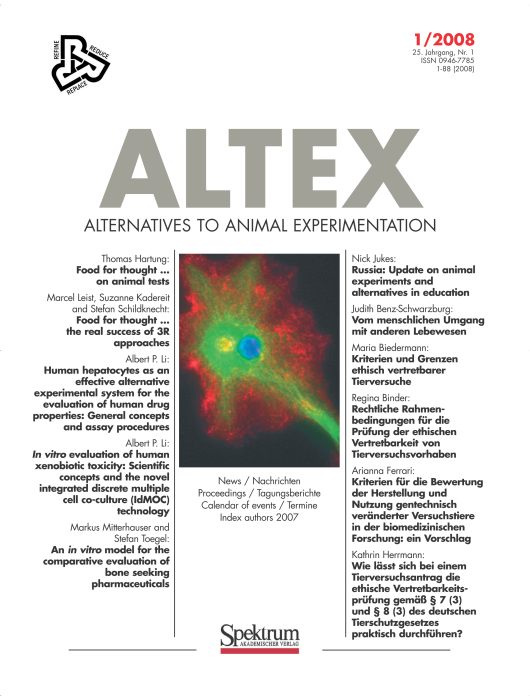In vitro evaluation of human xenobiotic toxicity: Scientific concepts and the novel integrated discrete multiple cell coculture (IdMOC) technology
Main Article Content
Abstract
In vitro human-based experimental systems represent a relevant preclinical tool for the definition of human xenobiotic properties as human-specific xenobiotic properties, by definition, cannot be detected with nonhuman laboratory animals. For the evaluation of human-specific xenobiotic toxicity, the experimental system should have human xenobiotic metabolism as well as cell populations representing the target cells in vivo. Based on these requirements, we have developed a novel cell culture technology, the Integrated Discrete Multiple Organ Co-culture (IdMOC) system, as an alternative experimental model for the evaluation of xenobiotic toxicity. The IdMOC system employs a wells-in-a-well concept for the co-culturing of cells from different organs as physically separated (discrete) entities in the inner wells, but interconnected by an overlying medium (integrated) in the outer well. The IdMOC system models a multi-organ animal/human in vivo with organs that are physically separated but interconnected by the systemic circulation. The IdMOC allows multi-organ interactions that are absent in the conventional single-cell type cultures. Applications of IdMOC include the evaluation of multiple organ metabolism as well as organ-specific drug distribution and toxicity. A particularly interesting application of IdMOC is the co-culturing of cancer cells and cells representing major organs for the selection of anticancer agents with minimal organ toxicity.
Article Details

This work is licensed under a Creative Commons Attribution 4.0 International License.
Articles are distributed under the terms of the Creative Commons Attribution 4.0 International license (http://creativecommons.org/licenses/by/4.0/), which permits unrestricted use, distribution and reproduction in any medium, provided the original work is appropriately cited (CC-BY). Copyright on any article in ALTEX is retained by the author(s).


